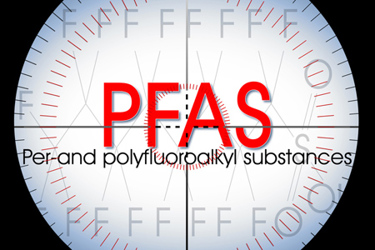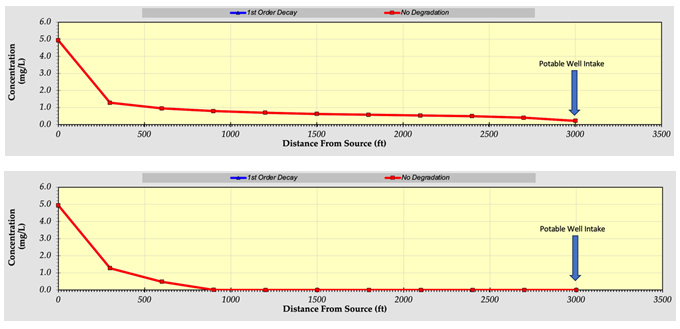Enhanced Attenuation — A Solution For Addressing The Daunting Challenges Of PFAS In Our Groundwater
By Ryan Moore

While drinking water providers scramble to upgrade their contaminant removal systems to meet the U.S. EPA's pending new PFAS regulations, leading groundwater remediation scientists propose enhanced attenuation as a solution to prevent further PFAS contamination to drinking water and our public health. These sorption-enhanced attenuation treatments are now being deployed with outstanding results.
Floodgates Opening — $11+ Billion in Agreements for U.S. Drinking Water Settlement Claims
June 2023 will be remembered as the most significant month in the history of U.S. drinking water claims settlements.
On Friday, June 2, before 3M® was scheduled to appear in federal court the following Monday, the company reportedly agreed to pay at least $10 billion in claims of drinking water contaminated with PFAS (per- and polyfluoroalkyl substances).
On the same day, a $1.185 billion settlement was reached between DuPont de Nemours® Inc., The Chemours Co., and Corteva Inc. for establishing a fund to compensate about 300 municipal water providers who have filed PFAS suits since 2018.
Compensation for these settlements would be limited to municipal water suppliers of drinking water to consumers, a small fraction of the total liability estimates due to PFAS impacts. 3M's PFAS liabilities alone could amount to $143 billion, according to one estimate.
The proposed settlements rank among the largest mass tort deals in history and arrive just ahead of the EPA's June 12 deadline for comments on their proposed regulation of six PFAS compounds under the Clean Water Act.
With proposed maximum contaminant levels (MCLs) in drinking water of 4 parts per trillion (ppt) for PFOA (perfluorooctanoate) and PFOS (perfluorooctane sulfonic acid), these regulations will force thousands of water utilities to install treatment systems to remove PFAS. Many will seek compensation for these systems' expected decades-long operation and maintenance costs, including substantial expenses for disposing of tons of PFAS-laden filtration wastes expected to be generated. Regrettably, much of the tens of billions in future cost burdens to rid drinking water of PFAS contamination will fall on taxpayers.
Enhanced Attenuation as a Tool to Prevent Future PFAS Drinking Water Impacts
Beyond the immediate need to remove PFAS from potable water supplies currently in use, preventing further damage to drinking water from the tens of thousands of latent PFAS sources is a top priority for the groundwater industry.
The sheer vastness of the PFAS problem demands economically viable and environmentally sustainable solutions to avoid these impacts. Enhanced attenuation treatments removing contaminants from groundwater and eliminating long-term exposure risk are best suited to meet these demands.
Enhanced attenuation is defined by the Interstate Technical and Regulatory Council (ITRC) as the “result of applying an enhancement that sustainably manipulates a natural attenuation process.” It has been used as a groundwater remediation approach since the 1990s to treat contaminants, like metals, that do not appreciably degrade in the environment.1
When a contaminant is introduced into the groundwater, it undergoes various natural physical and chemical processes affecting its movement. These processes include advection, dispersion, degradation, and sorption.
As PFAS do not appreciably degrade in the environment, enhancing the attenuation of a PFAS plume (i.e., stopping its movement and shrinking it) involves modifying the aquifer materials' sorption properties to retain or immobilize the chemicals in place (i.e., in situ).
Recently, respected groundwater remediation experts published guidelines demonstrating how "enhancing PFAS retention can play an important role in ... providing long-term protection of downgradient groundwater receptors."2
Sorption Effects on Contaminant Plume Development
Contaminant sorption refers to the attachment of contaminants to the solid surfaces of porous media, reducing their mobility. Contaminant sorption is directly tied to the fraction of organic carbon (FOC) in an aquifer, which in most cases, makes up only a tiny fraction of the total aquifer's mass. Contaminants move slower through aquifer materials with a higher FOC than with a lower FOC and will develop comparatively less extensive plumes in groundwater.
The amount a contaminant's movement is slowed relative to the groundwater's speed and is known as the contaminant retardation factor or Rf, which factors the aquifer's FOC and each contaminant's sorption affinity (i.e., contaminant sorption coefficient or KOC). An Rf of 1 means that a contaminant migrates through an aquifer at the same speed as groundwater. An Rf of 2 means that a contaminant will move at about half the speed of groundwater. Most Rf values range between 1 and 5 for organic contaminants in natural aquifers.
By sampling aquifer soils for FOC, modelers can perform screening-level natural attenuation assessments to understand if a contaminant plume has the potential to impact a receptor (e.g., potable water well) downgradient (Figure 1).

Figure 1. Comparison of contaminant migration along a plume centerline using the EPA's BIOSCREEN Natural Attenuation Decision Support System model, assuming a continuous source, a model run time of 30 years, no degradation, and contaminant retardation factors of Rf = 1 = groundwater (top chart) and Rf= 5 (bottom). Simulation shows that a contaminant plume with Rf=5 will not reach a hypothetical potable well intake 3,000 feet away after 30 years.
If a potential exposure risk cannot be disproved through this process, remediation will often be required. For PFAS, sorption-based enhanced attenuation treatments that eliminate this risk are a highly cost-effective and sustainable approach.
Colloidal Activated Carbon Dramatically Enhances PFAS Sorption In-Place
Enhanced attenuation remedies for PFAS work by engineering the Rf of an aquifer directly in place. This process uses a patented colloidal activated carbon (CAC, commercially available as PlumeStop®) material injected into the subsurface, permeating the aquifer materials and coating them with a carbon film. These CAC treatments increase the Rf within a treatment zone many thousands-fold, effectively immobilizing PFAS to eliminate the exposure risk.
Since 2014, CAC has been used to engineer the Rf within targeted groundwater treatment zones and stop the migration of organic contaminant plumes, including PFAS. CAC applications for PFAS have been applied as barriers at the leading edge of plumes to stop their migration and in source zones to cut off contaminant flux into a plume. Fortunately, most PFAS contaminants including their most known toxic forms, PFOA and PFOS, have pronounced affinity for sorption onto carbon and typically form low, ppt-concentration plumes, features that make the "forever chemicals" highly amenable to this approach.
The CAC approach has been cited in peer-reviewed scientific studies as the only in situ treatment method demonstrating complete PFAS elimination in groundwater. Additionally, it is the subject of numerous U.S. Department of Defense-funded laboratory and field research projects, examining various technical aspects of this innovative treatment method, specifically Strategic Environmental Research and Development Program Projects ER20-5182, ER21-1059, ER21-1130, ER21-3959, ER21-1124.
Enhanced attenuation methods utilizing CAC have been actively deployed and proven successful at over 40 PFAS contamination sites worldwide, with hundreds more projects in the pipeline. Installed CAC treatments, like the recent treatment completed at Martha's Vineyard Airport or the oldest PFAS treatment now showing seven years of PFAS elimination, meet the primary project objective of immobilizing PFAS to minimize exposure risks. Designed to eliminate PFAS risk, they represent a go-to solution to prevent further impacts on our precious drinking water resources.
References
- ITRC (Interstate Technology & Regulatory Council). Enhanced Attenuation: Chlorinated Organics. EACO-1. Washington, D.C.: ITRC, Enhanced Attenuation: Chlorinated Organics Team. www.itrcweb.org. Published online 2008.
- Newell CJ, Javed H, Li Y, et al. Enhanced attenuation (EA) to manage PFAS plumes in groundwater. Remediation Journal. n/a(n/a). doi:10.1002/rem.21731
Ryan Moore (rmoore@regenesis.com) is a Senior Technical Manager and the PFAS Program Manager at REGENESIS
